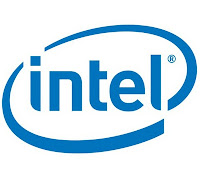Challenge: The Protein Folding Problem
Just like a road map, there are many ways to fold a protein molecule but only one is right. Misfold a map and the only penalty is inconvenience; but misfold a protein and the penalty can be a bad disease. How does a protein know the shape into which it is supposed to fold? High-performance computing can help answer this question.
 Low free energy is good. Laboratory experiments can probe around only the unfolded and folded regions of the energy curve. Computer experiments can probe the whole thing. Professor Adrian Roitberg and Seonah Kim are doing just that on the UF High Performance Computing (HPC) Cluster at the University of Florida. The cluster depends on the high performance and reliability of the Cisco® InfiniBand fabric that connects the AMD Opteron based Rackable servers and storage subsystem. Kim has run more than 45 days on 100 processors and isn't done yet.
Low free energy is good. Laboratory experiments can probe around only the unfolded and folded regions of the energy curve. Computer experiments can probe the whole thing. Professor Adrian Roitberg and Seonah Kim are doing just that on the UF High Performance Computing (HPC) Cluster at the University of Florida. The cluster depends on the high performance and reliability of the Cisco® InfiniBand fabric that connects the AMD Opteron based Rackable servers and storage subsystem. Kim has run more than 45 days on 100 processors and isn't done yet.The simulation uses the highly parallelized Assisted Model Building with Energy Refinement (AMBER) package of molecular simulation programs. Why so long to study just two proteins? For one thing, biology involves a lot of water. The pinkish cloud is 7000 water molecules (21,000 atoms) surrounding a 14-residue peptide molecule (the bluish "worm" in the middle). The AMBER simulation works by calculating the motions of all these molecules. They bend, rotate, and move through space, avoiding or bouncing off one another. The simulation divides time into little steps and uses Newton's laws of physics to calculate the motion of the thousands of atoms at each step.
 The High-Performance Computing Initiative at UF is an innovative approach to such needs. The design is a computing grid, linking specialized research computing clusters to a central parallel cluster over a dedicated high-speed network. Funding from the National Science Foundation and a cooperative agreement with Cisco provided the routers and switches for that grid.
The High-Performance Computing Initiative at UF is an innovative approach to such needs. The design is a computing grid, linking specialized research computing clusters to a central parallel cluster over a dedicated high-speed network. Funding from the National Science Foundation and a cooperative agreement with Cisco provided the routers and switches for that grid.(This news summarized from Cisco and original text can be reach their website)





No comments:
Post a Comment